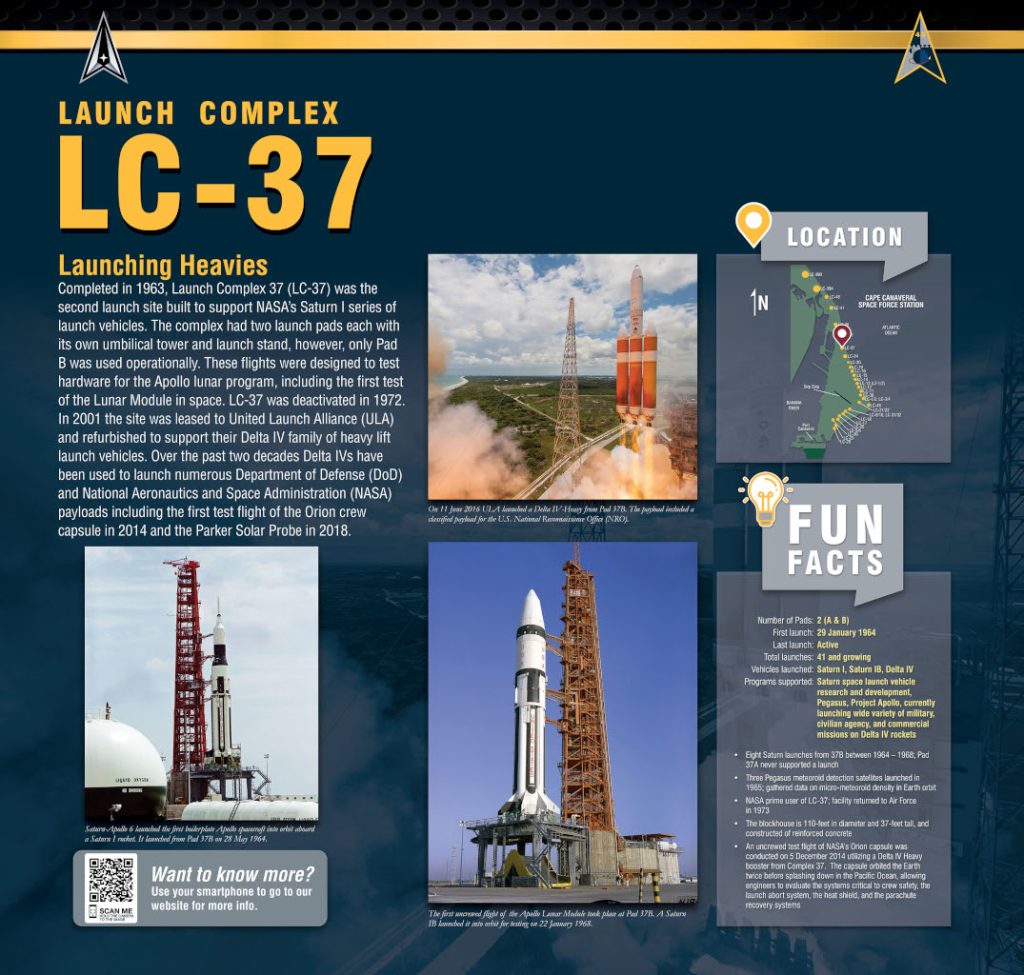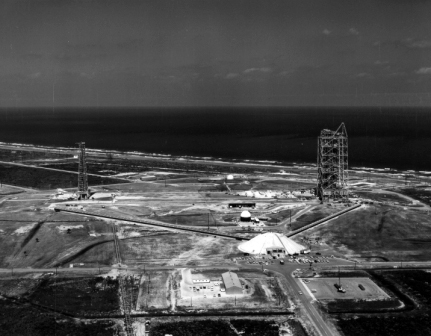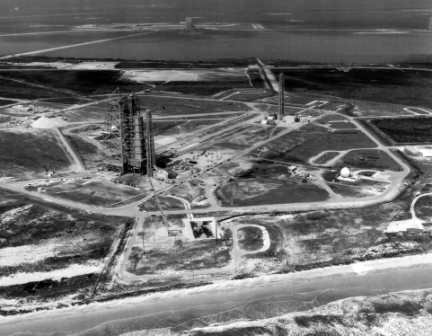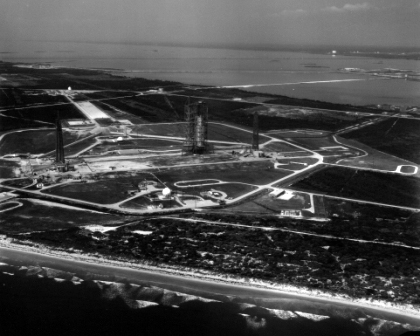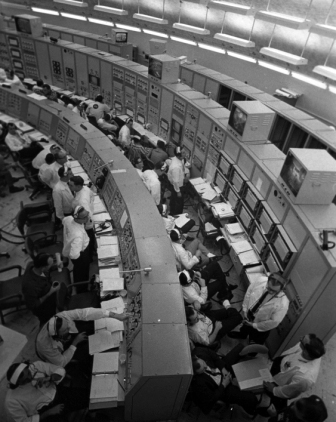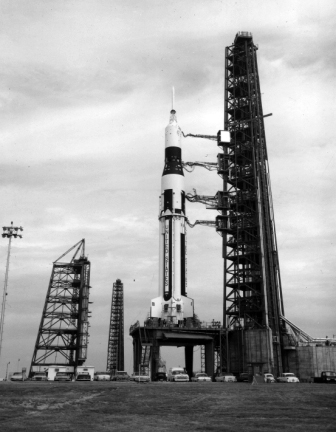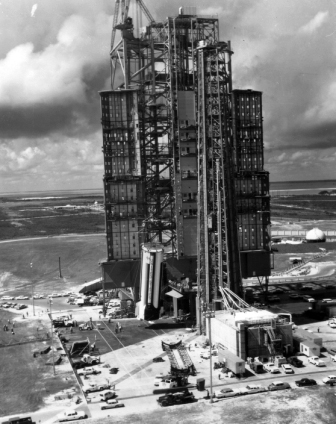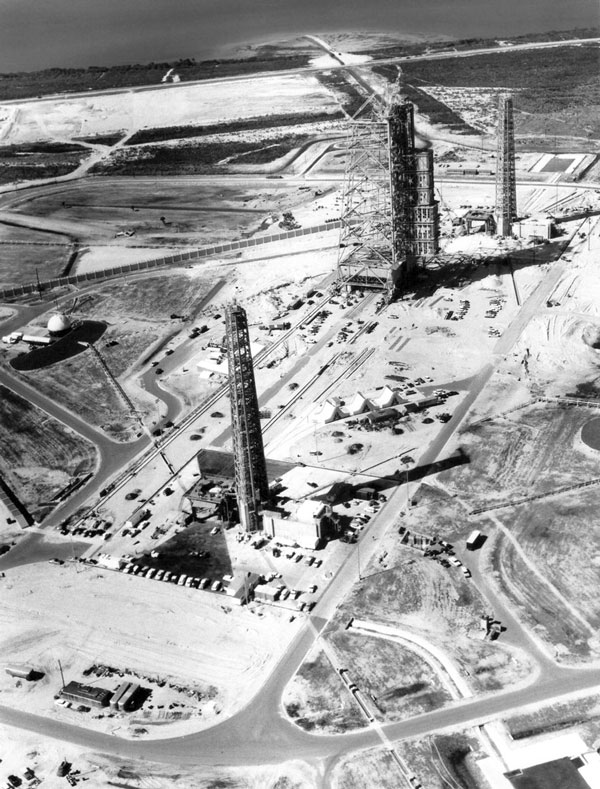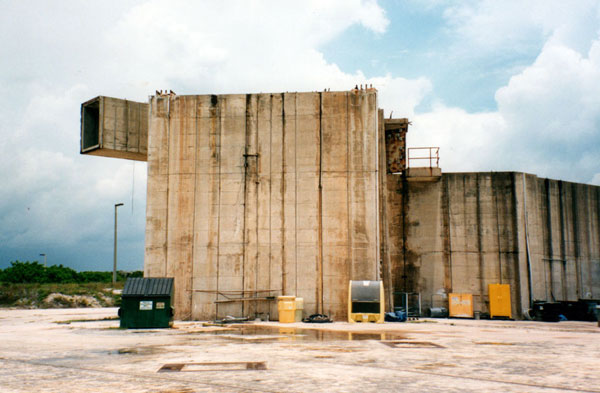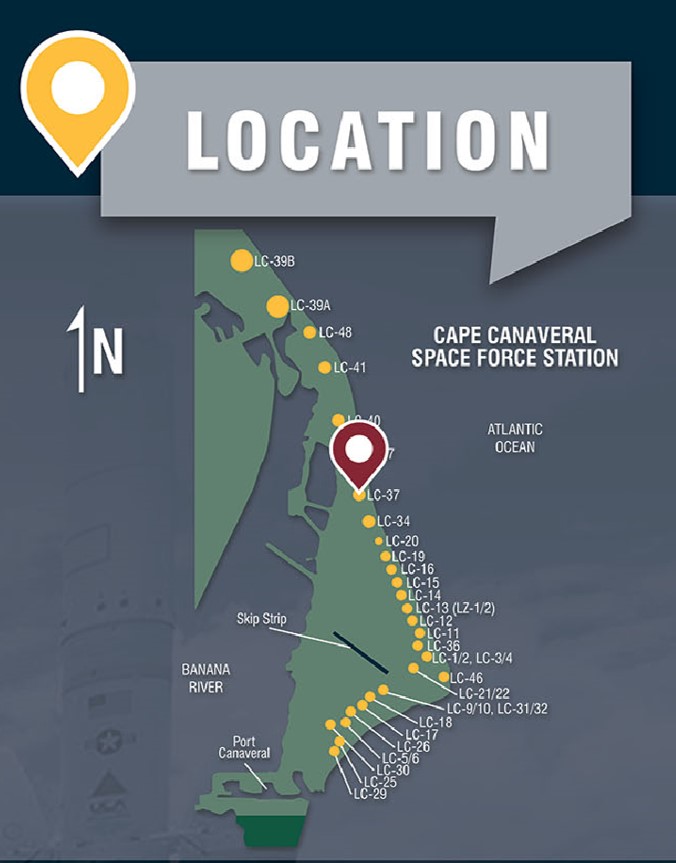
Photo Gallery
Overview
Systems
Other Programs
- Unmanned Apollo
- Geostationary Operational Environment Satellite (GOES)
- Defense Support Program (DSP)
- EUTELSAT
- Defense Satellite Communications System (DSCS)
- Wideband Global (SATCOM)
- Global Positioning Satellite (GPS)
- Classified Department of Defense payloads
Cost: $44,004,000
Launch Complex 37 Highlights
- March 1961 – Bid invitations issues for site
- April 1961 – Site preparations started
- Awarded contract for Pad 37B
- March 1962 – Construction started
- 7 August 1963 – Construction completed on Pad 37B
- 17 August 1963 – Construction completed on Pad 37A
- Launch complex consisted of two launch pads, 37A and 37B. Each pad had its own launch stand and umbilical tower. A single service tower served both pads using a rail system. At that time, the tower was the largest movable structure in the world. At each position, the tower was jacked up far enough to take the weight off the wheels. The wheels would have developed a flat spot if not jacked up
- August 1963 – NASA accepted the launch complex
- 29 January 1964 to 30 July 1965 – Total of 6 Saturn I launched from Pad 37B
- 5 July 1966 to 22 January 1968 – Total of two Saturn IB launched from Pad 37B
- 22 January 1968 – First unmanned Apollo lunar module launched from Pad 37B
- 1 January 1969 – Pad 37B deactivated
- November 1971 – Pad 37B mothballed
- April 1972 – Pad 37B service structure scrapped
- November 1973 – NASA returned the launch complex to the Air Force
- Launch complex remained dormant into the 1990’s
- No launches from Pad 37A
Delta IV (Pad 37B)
- 8 January 1998 – Boeing received a Right of Entry for new Evolved Expendable Launch Vehicle (EELV) on Pad 37B
- August 1999 – Work began on Horizontal Integration Facility (HIF) built by Haskell Engineering, which is 7-story high structure and 100,000 square feet
- March 2000 – Raytheon topped off a new 330′ tall Mobile Service Tower
- June 2000 – HIF construction completed
- The HIF has two active vehicle processing bays and an annex to stage the booster and equipment; Each bay is 7-stories high and measures 100′ x 250′
- Spaceport Florida Authority financed and built the HIF and leased it to Boeing
- The pad has a 250,000-gallon LO2 tank, 850,000-gallon LH2 tank; the Fixed Pad Erector (FPE) is used to erect the booster on the Launch Table (65′ x 45′ x 23′)
- Delta IV Operations Building includes the Launch Control Center (LCC) and Mission Director’s Center (MDC)
- November 2000 – New umbilical tower completed
- 20 November 2002 – First launch of Delta IV (Medium)
- 21 December 2004 – First launch of Delta IV (Heavy)
Other Notes:
- Is currently an Active Space Launch Complex used by United Launch Alliance’s Delta IV program.
